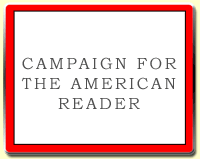 Her latest book is How to Do Things with Books in Victorian Britain.
Her latest book is How to Do Things with Books in Victorian Britain.One of the top books on the history of reading she discussed with Jane Rudloff at The Browser:
Too Much To KnowRead about the other books Price tagged at The Browser.
by Ann Blair
In the 21st century many of us suffer from information overload, but Ann Blair’s new book Too Much to Know shows that the invention of the printing press in the 16th century led to similar feelings of stress.
One of the interesting things about this book is that it forces us to question the self-pitying sense in which we think we are more deluged by information than anyone was ever before. Ann Blair shows that every generation has felt just like this. The book pushes our sense of information overload backward to the period between around 1500 and 1700, and it describes solutions people found to that sense of panic in the face of too many books.
What kind of solutions do they come up with?
Ironically it shows this was a case of fighting fire with fire. Readers’ response to having too many books to deal with was to produce more books, in particular reference books which served as an index to or digest of other books. For example, you would read a dictionary asa way of avoiding having to read all the books on which it was based. The reference books that she describes were the ancestors of Cliffs Notes or Reader's Digest.
So what can we do about information overload in our own times?
One of the things that I enjoy about being an historian of this field is that you pick up some of the tricks that were used in the past to combat this problem. For example, Ann Blair talks about kinds of furniture that were used to deal with information overload. A “bookwheel” was like a miniature Ferris wheel where each book rides in a kind of platform. Each of them is lying open at the page you want and if you want to move from one book to another, you just give the wheel a spin and it’s right in front of you at the appropriate page. I would love to have something like that.
She also talks about the history of the written slip, which is the ancestor to the index cards invented in the 19th century. Scholars would have something like a clothes line hanging up, with slips of paper strung along it. It is so helpful to think about information in spatial terms. I still print documents out and arrange them on my desk as if I were playing solitaire.
The Page 99 Test: Ann Blair's Too Much to Know.
The Page 99 Test: Leah Price's How to Do Things with Books in Victorian Britain.
--Marshal Zeringue



